Fat Tire Bikes: Fat and Happy
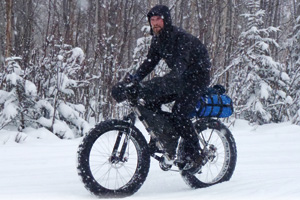
Mountain bikes with extra-wide tires cruise through snow and sand
By Mark Morical
Photo at right: Pete Basinger, winner of the Iditarod Trail Invitational, out for a cruise in the snow. Photo by Greg Matyas
Jim Fagan flew down the snowmobile trail with confidence, not giving the risk a second thought. I took my time, braking gently as I cruised back toward Wanoga Sno-park, southwest of Bend, Ore. It was my first time on a bike in the snow, and I wasn’t sure just how fast I should go, lest the tires slide on the groomed trail or I otherwise lose control.
Control was not an issue. The 4-inch-wide tires handled the groomed trail with ease, and I might as well have been riding on dirt single-track. (Most mountain-bike tires are 2 to 2½ inches wide.)
Fat tire bikes have names like Fatback, Surly Pugsley and Salsa Mukluk. Snow bikes, or fat bikes — popular in perpetually snow-covered locales like Alaska and northern Minnesota — are slowly becoming part of the cycling industry in the Northwest.
Their defining features, the extra-fat tires, are what draw curious looks and questions from Nordic skiers and snowmobilers sharing the trails. Those tires are also what give snow bikes the ability to handle a variety of terrain. The bikes glide over hard-pack snow, loose dirt, sand, and pretty much anything except deep, unpacked snow.
Fagan, a fat bike enthusiast from Bend, and I completed a loop of about five miles on the groomed snowmobile trails at Wanoga this past February. Climbing uphill is noticeably harder in the snow, but the bike’s tires made it much easier than I hoped. Off the groomed trail, though, the tires sunk in too deep, rendering the bike impossible to pedal.
The greater surface area of the wide tires creates less friction in challenging terrain, according to Kevin Gorman of Bend’s WebCyclery. The bikes, which do not have suspension, feature wider frames and forks to support the bigger tires.
The number of cyclists riding the snow bikes in Central Oregon is small. Gorman estimates that only about a dozen locals own snow bikes, which start at about $1,600 and are available in Bend at WebCyclery and Sunnyside Sports. Most of the snow-bike riders can be found on snowmobile trails near Mount Bachelor or on single-track east of Bend.
Although firm, snow-covered single-track is the most popular terrain for the snow bikes, they also perform well in sand. Several Central Oregon mountain bikers have ridden them on the sandy Bureau of Land Management land near Horse Ridge southeast of Bend.
The beach is another place where the fat bikes can be found, as the 4-inch-wide tires offer control even in loose, challenging beach sand. The bikes are becoming increasingly popular at Northwest coastal towns such as Long Beach, Wash.
Among the places that snow bike riders should probably avoid in the wintertime are trails groomed specifically for cross-country skiing, such as those at Meissner Sno-park west of Bend. While the bikes are not legally prohibited from those trails, they are not exactly welcome, either.
“Our entire board is opposed to it,” says Meissner Nordic president Dale Navish, himself a mountain biker. “We have members who spend thousands of dollars to provide groomed trails for Nordic skiing. Mountain bikes don’t really fit that model. There are hundreds of miles of snowmobile trails that are groomed, and they’re open to all users.”
Navish cites safety, right-of-way conflicts, and damage to the groomed trails as reasons to keep the snow bikers off the Nordic trails. That could become more of an issue if the number of snow bikers increases in the Northwest.
One cyclist hoping for that increase is Pete Basinger, who recently moved to Bend from Anchorage, Alaska, to open a distribution center for Fatback, a snow bike company based in Anchorage.
Basinger has completed the 350-mile Iditarod Trail Invitational bike race across Alaska, formerly known as the Iditabike, 12 times. He won the event this past February. He has snow biked the 1,100 miles from Anchorage to Nome, Alaska. Twice.
Snow bikes owe part of their history to the Iditarod Trail Invitational, as competitors sought ways to ride with more efficiency through the snow.
“There were guys in Fairbanks who would take two rims and weld them together,” Basinger says. “For a while, that was all the technology.”
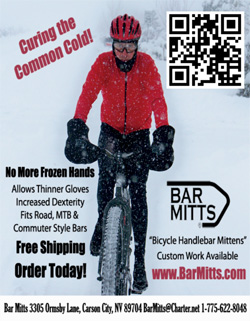 Over the past several years, Basinger has had a hand in developing the Fatback, as the bikes’ popularity have surged in Alaska, where trails are covered with snow for much of the year. He says that so many people have fat bikes in Alaska, that the snowy trails become packed down and ridable just from the sheer number of tires on the snow.
Over the past several years, Basinger has had a hand in developing the Fatback, as the bikes’ popularity have surged in Alaska, where trails are covered with snow for much of the year. He says that so many people have fat bikes in Alaska, that the snowy trails become packed down and ridable just from the sheer number of tires on the snow.
“We’re hoping it will take off in Bend — there are so many good trails,” Basinger says. “You can do big loops. In Anchorage, anybody who’s a biker has a snow bike. All the single-track trails get packed in by the bikes.”
Bend is not Anchorage. Still, Basinger envisions unlimited potential throughout the Northwest —whether in the mountains or on the beach.
For more information on fat-tire bikes, visit fatbackbikes.com or snowbikes.wordpress.com.
Mark Morical is the outdoors writer for The Bulletin newspaper in Bend, Ore.
He can be reached at (541) 383-0318 or at mmorical@bendbulletin.com


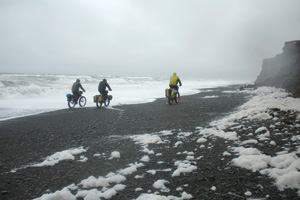
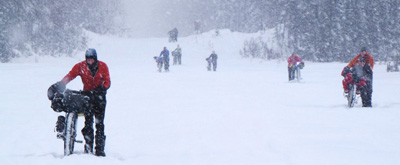
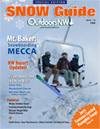

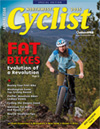
Seattle E-Bike, 2 years ago
By the wAy, only 3 stores in Seattle sell these. REI, Seattle E-Bike, and one other. REI and the other have none in stock, you have to order sight unseen. Seattle E-Bike believes in them. We have more than 50 in stock, including 20 of the Cascade Fat E-Bike, which we believe is right now the Worlds only E hybrid Fat and only all wheel drive Fat. People can see them and drive them right at our store in Pioneer Square at First and Main. We also customize our own line of snow and mountain race Fats, the Mountain Monster. Brian Nordwall, President Seattle E-Bike.